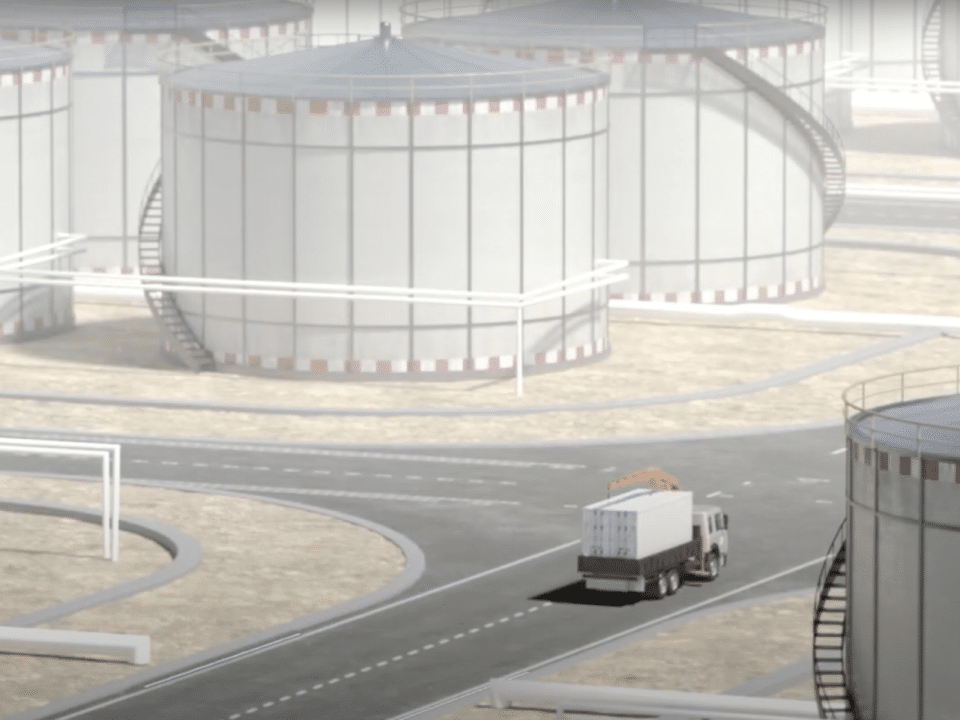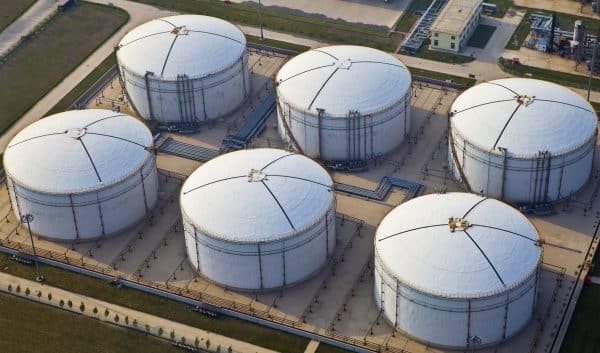
-
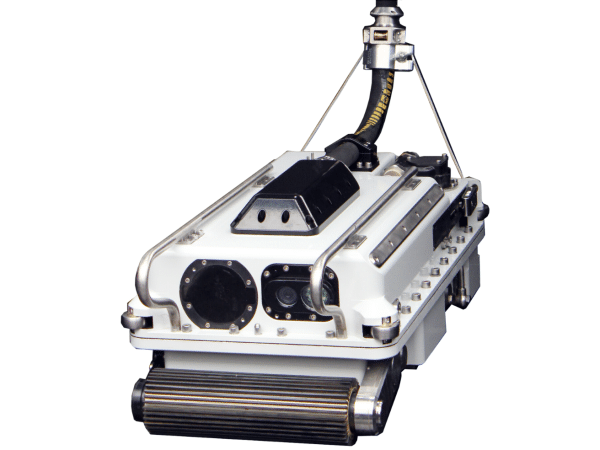
- Assess storage tank floor condition without taking tanks out of service.
- Analyze data in real-time with high-resolution NDE sensors to understand the current tank integrity so turnarounds are planned strategically and effectively.
- Increase personnel safety, decrease VOC emissions, and eliminate the high cost of tank down time/operational impact.
Environmental Protection, Code Compliance & Reporting
-
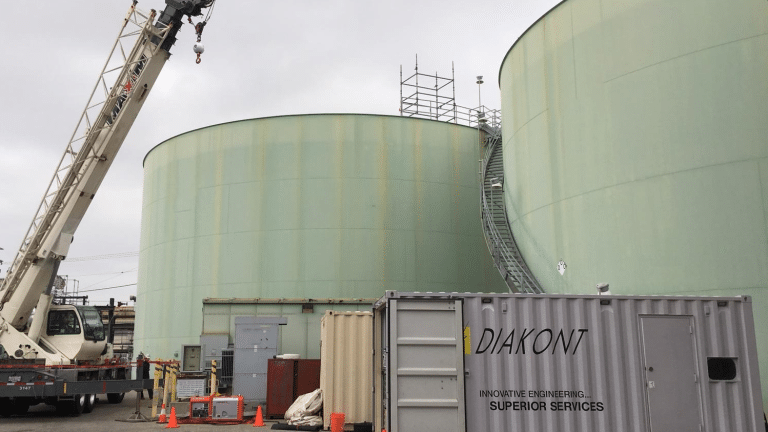
Environmental Stewardship
Diakont technicians and services take serious precautions during tool launch and retrieval to ensure effective environmental protection. To prevent VOC vapor release, the manway hatch is only opened briefly during launch and retrieval. At the same time, the fill valve is blocked to keep any vapor emissions to an absolute minimum. Careful practices are also employed to contain any liquid drips during retrieval.
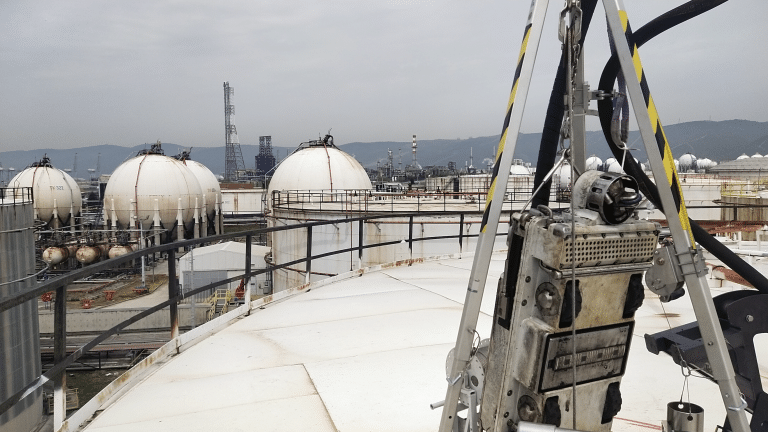
API 653 & EEMUA 159 Code Compliance
By not having to take tanks out of service for examination, you can significantly reduce the cost of inspections. This allows the opportunity to plan out-of-service periods during down seasons based on data provided from your final report. Our knowledge and experience with API 653 and EEMUA 159 over the years will ensure your tanks are compliant with standards and safe for operational requirements.
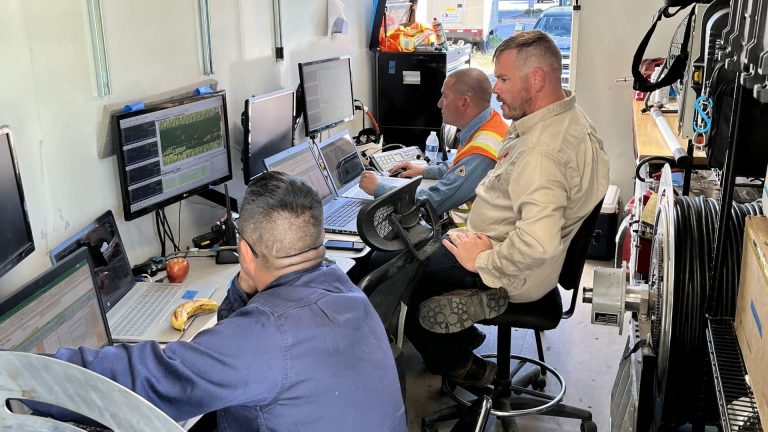
Final Reporting
Following the inspection, Diakont’s internal data analysis team reviews the Nondestructive Evaluation (NDE) data and generates a comprehensive digital report. This report includes a complete floor map, even in cases where a drawing was not previously available.
When a complete code-compliant API 653 inspection is requested, a Diakont-certified inspector examines the tank and reviews all inspection data before issuing the API 653 results.
Safety & Innovation
Ensuring Safety
Personnel and process safety is the primary focus when conducting storage tank floor inspections. Our personnel safety program provides the framework our field technicians use to ensure a safe work environment. Diakont inspection personnel are:
- Basic Plus trained
- RSO trained
- OSHA 10/30 certified
- Trained in first aid/CPR/AED
- Equipped with proper PPE
- Empowered with stop-work authority
High-Resolution NDE
The Diakont systems use two complementary NDE technologies to assess storage tank floor integrity. An MFL array provides robust NDE capabilities to determine conditions and detect anomalies in almost any surface condition. In parallel, the UT array provides high-resolution depth measurement and sizing of identified anomalies. The data from both NDE systems are used in the same manner during evaluation, like a traditional out-of-service manual inspection. However, Diakont’s NDE system outputs are fully encoded and fused.
- Magnetic flux leakage (MFL) – the in-tank tool contains an array of 64 hall effect sensors as part of its MFL system, including 4 eddy current sensors that measure housing lift-off.
- Ultrasonic testing (UT) – the Stingray tool also includes a high-accuracy array of UT sensors that measure floor thickness, anomaly size, and depth. The UT module has 96 sensors in 4 staggered rows to provide complete inspection coverage.
Feasibility, Integrity & Cleaning

Feasibility
Diakont performs a 2-step advanced assessment to determine the feasibility of a tank before an inspection. The first step is comprised of a tank drawing review and a client questionnaire. The second step includes an on-site deployment of an intrinsically safe camera system to capture images of the tank floor and assess the presence and volume of debris or sludge. At this same time, magnetic sampling is gathered to determine whether any debris is ferromagnetic. Conducting this thorough feasibility assessment allows Diakont to ensure an inspection is possible in a tank’s current condition or whether desludging is required in advance.
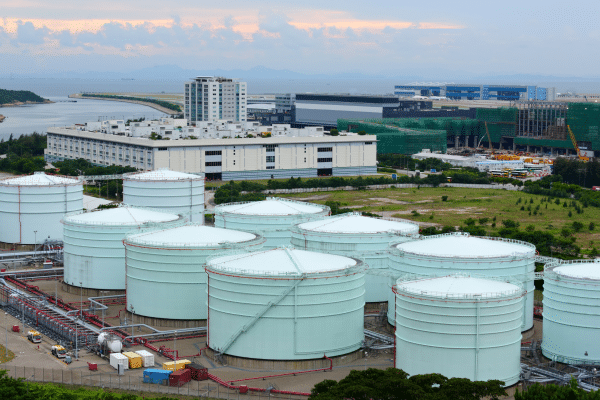
Storage Tank Roof Integrity
Diakont takes roof integrity into account during the project assessment. Roof structural integrity is verified in advance via the standard recurring roof spot UT inspection. In some cases, scaffolding may be utilized on a tank roof with degraded areas.
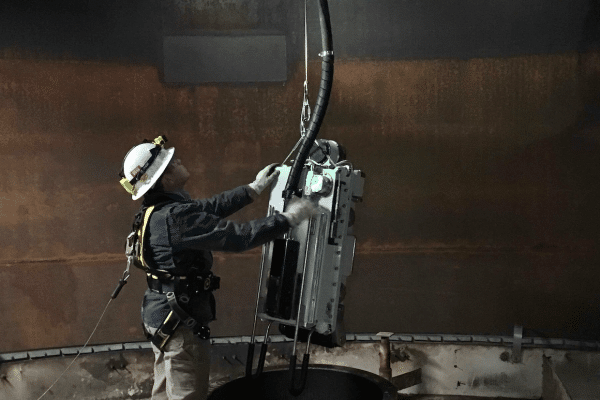
Tank Cleaning
The demand for online inspections of above ground refined petroleum storage tank floors continues to increase, primarily for cost savings. However, many petroleum tanks have sludge and/or sediment on the bottom, which impacts NDE effectiveness and coverage. The legacy methods for cleaning tanks while they remain filled, using lances or jets from the roof or shell, have generally shown limited effectiveness – principally because they do not have a movable end-effector at the floor. When needed, Diakont uses internal robotic tools to vacuum lightweight sludge and sediment from the tank floor. This is done with hydraulic pumps and filtration systems that return the clean product back to the tank.
Let's Work Together
- Assess storage tank floor condition without taking tanks out of service.
